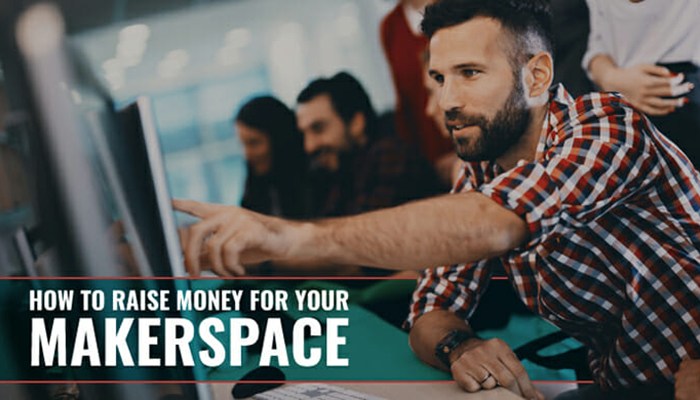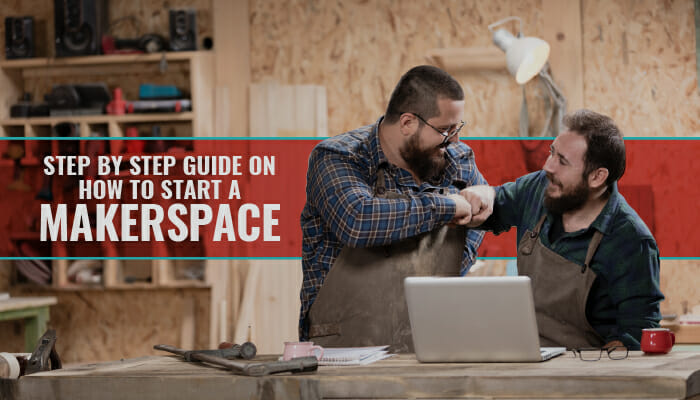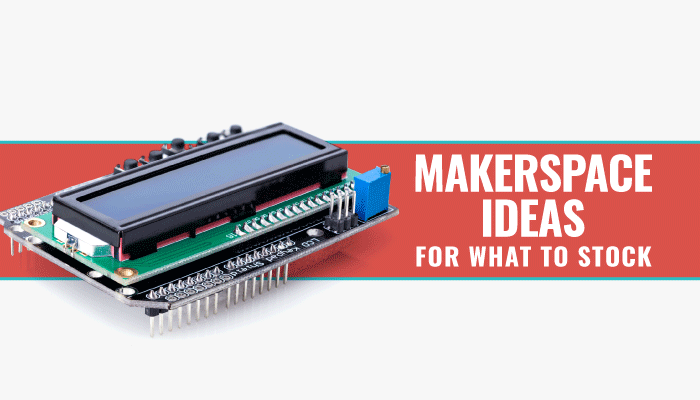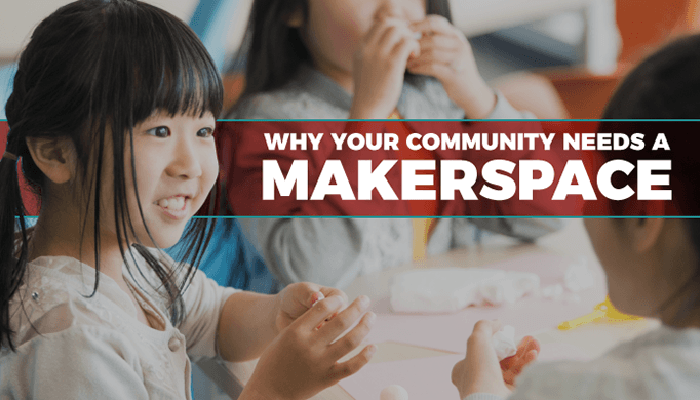A makerspace is a place for people with similar goals and interests to meet and interact with one other to work on projects while also exchanging ideas, knowledge, and resources. You might know them better as either “fablabs” or “hackerspaces”.
The purpose of these makerspaces is for everybody who is involved to gain more skills and knowledge from others so that they grow in experience and expertise.
With so much value gained from having a makerspace, it should be easy to get funding … right? Luckily, there are Makerspace grants out there that you can tap into.
However, you should know that getting a Makerspace grant shouldn’t be your only means.
If you are a teacher, educator, librarian, or just a maker yourself that is interested in building a makerspace, or creating an extension to better accommodate one, there are one of five ways that you can collect funds that can go towards the process of its planning and development.
#1. Host A Hackathon
A hackathon is an event that lasts a span of a few days or more where a large number of people meet together to work on a computer or IT-related project.
By raising a hackathon, you will give yourself an opportunity to find some qualified project members, a space to work, and a budget that the whole team contributes towards in order to gather tools and resources required for your project.
To fit out the building, members, businesses, or tool distributors can kindly donate resources.
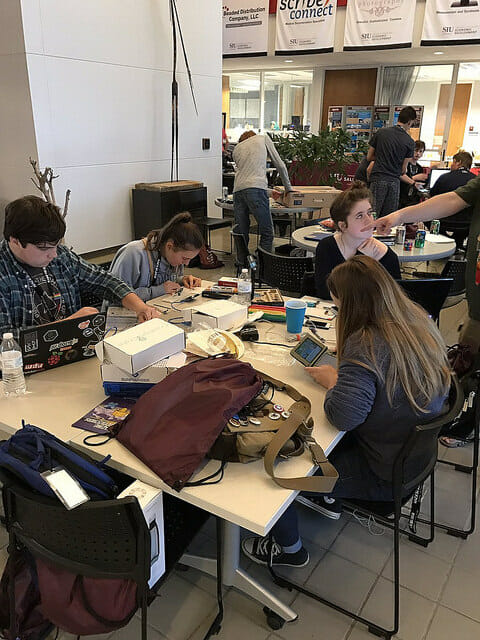
For example, HackSI is a yearly event held at the Dunn-Richmond Center on the SIU campus in Carbondale, IL. The event started in 2013 as an attempt to show that Southern Illnois has access to world class technology.
Since it’s inception, HackSI has grown into a vibrant community of more than 250 hackers aged 7 to 70.
They reached out to companies like Creation Crate and asked for donations. Using these donations, they were able to enhance the experience of their hackathon;
Most makerspaces use this method in order to be funded. On one hand, it is the fastest way to get funds, and it requires next to no crowdfunding or fundraising tactics. On the other hand, there is quite an uncertainty to going in this direction.
With lack of resources and not an adequate space to work with, it can be difficult in convincing qualified and skilled individuals to join you on your project. While you do need money, there has to be something that is already there to motivate talented candidates who are on the outside looking in.
#2. Apply For Company Sponsorships
Sponsorships are financial or “in-kind” gestures of support of an activity or event, primarily used to achieve specific goals in a business. Sponsorships are not the same as advertisements.
While advertising is classified as a quantitative medium, sponsoring is classified as a qualitative medium. Sponsorships are made in any type of size, whether on a local or mainstream level.
To help reduce insurmountable costs that many companies face, they use sponsorship support and collaborate with another company.
Sponsorships allow you to target specific markets without any real hurdles to jump through. Not to mention, sponsorship can play a specific role in public and customer relations.
A company may have resources that you need. Rather than flat out buy the resources that might be expensive, you can apply for a sponsorship with them so that they can help you get your project going.
In turn, your project must be beneficial to them in some way, whether they are interested in a product or service of yours, or they want you to promote their business.
For example, Sarah Klug has been using Creation Crate’s Classroom Kit in her classroom at Tioga High School.
She has around 30 students meeting weekly who are building projects that are teaching them electrical engineering and coding using the Arduino microcontroller.
These kits were donated to the school via a public-private partnership with Enel Green Power, who operates a large wind farm in Tioga.
This is exactly the type of relationship we need to be building with the business leaders in our communities. Companies like Enel will be the future employers of our students and we need to work together to ensure that the skills the students develop are the ones that employers will need in the future.
#3. Look For Makerspace Grants
Some people think of grants as “free money”, and that is essentially what a grant is: Money that you never need to pay back, unlike a loan. While grants are very encouraging, they do require a lot of planning in order for school to be in position to receive one.
Schools can obtain a Makerspace grant either from local investors or their state’s department of education. Makerspace grants can help many companies, schools and functions in a number of different ways.
Makerspace grants can provide funds for books, software, hardware and other necessary resources towards schools and other facilities.
In most cases, a company or program must either have a nonprofit status, belong to a governing body, or be affiliated with a school or other academic organization, in order to become eligible for a grant.
Makerspace grant funding is often a concern for organizations who do not have nonprofit status, so you may need a company to help represent you.
#4. Join Donorschoose.org
DonorsChoose.org is a nonprofit organization that allows people to donate directly to classroom projects within public schools. It is known to be the first communal crowdfunding organization of its kind.
Since January 2018, over 1 million classroom projects have been successfully funded. Three of every four public school have at least one teacher participating on DonorsChoose.
Any type of school can request for resources on this platform; Schools of lower economic status offer request basic school supplies, while upper class schools request high-tech supplies and equipment.
This article will teach you more about what you can stock in your Makerspace.
Even GED and Pre-K programs that are offshoots of public schools are considered eligible. It can take a number of months to receive the funds necessary to obtain the right supplies, however.
#5. Start A Makerspace Crowdfunding Campaign
There are many crowdfunding sites for you to use. Crowdfunding is a tactic where anybody can donate money towards a certain cause. Such causes include raising money for medical bill costs to putting together a budget for an album release.
Most crowdfunding projects have a certain goal in the form of a dollar amount that the individual or company that created the project must get to in order to be fully funded for their cause to move forward.
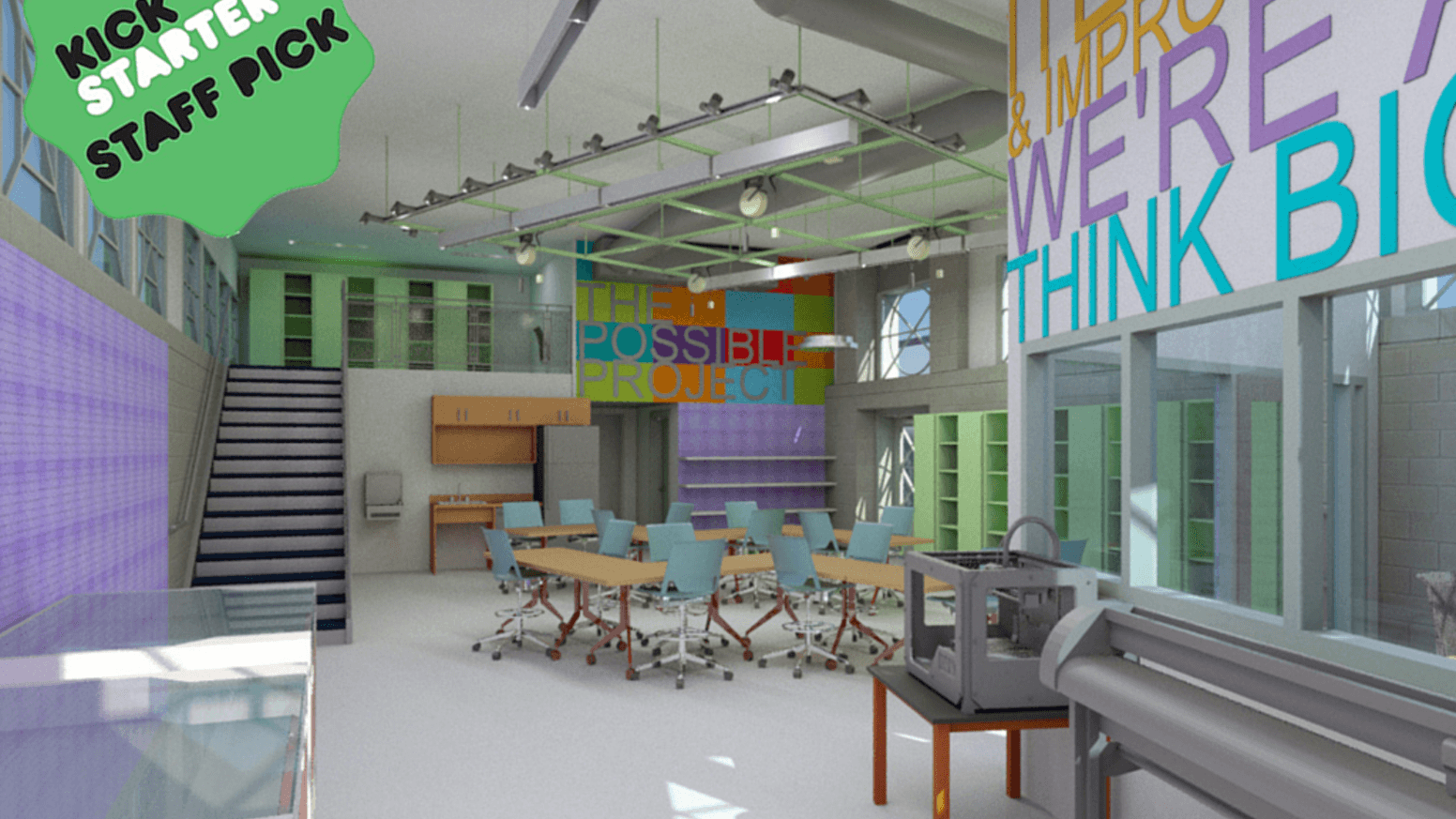
For example, take a look at The Possible Project (TPP). This three-year intensive afterschool program teaches 10th-12th graders, most of whom are low-income, how to start and run their own business.
They put together a kickstarter and were able to raise over $50,000 towards supplying their space with laser cuters and other material to help them make.
Unfortunately, many projects like TPP turn out to be unsuccessful. To have a chance at a crowdfunding project to become successful, there are a number of steps that you must take:
Create Your Story
Firstly, you need to tell a story on your crowdfunding project page.
Explain what it is you want to do, why you need money, what you will use the money for, and what you hope to accomplish by completing this project. It can also help by adding emotion to your story, so visitors can become more motivated to chip in.
It is your job to help visitors finish the sentence of “Without this…”. It is okay to be open and honest about your project, as long as you express good intentions and explain why there’s a good reason for visitors to donate.
It’s also necessary in some cases to provide blueprints, plans, renderings or prototypes of your project.
If you have a prototype of what you want to accomplish, you can be eligible for more pristine crowdfunding websites, such as Kickstarter.
Websites such as Indiegogo and GoFundMe do not require prototypes or any important credentials to launch a crowdfunding project.
Many individuals create projects that set unrealistic goals, or are just blatantly out to take people’s money for no good reason. These projects are often ignored.
Spread The Story
However, it is not enough to just create a project page on a crowdfunding site a call it a day.
It is even more important to spread the word about your project online and in person. If there are websites that have public forums that you happen to be a member of, feel free to explain what you need, so that more people can become aware.
If you have social media platforms with a core group of followers, you can share your project with them, so that they can share the project with people that they know.
This way, you at least know that somebody that you matter to is out there listening and is appreciating what you are doing.
Stay Active
Thirdly, you must be diligently active throughout the duration of your crowdfunding project. Post updates every week, two weeks, every month or as far apart as you think is appropriate for important happenings and milestones to take place.
Constant updates are to keep your backers and other followers posted on the state of the project. It helps to post updates regularly so that your audience can still actively engage in the project, and more importantly, continue to support it with money. Backers will also get notifications in their email inboxes of these updates, too.
If it has been months since you last updated your project, these backers might forget all about your project.
Furthermore, any people that stumble across your project page might assume that it has been abandoned due to the lack of activity. Of course, nobody wants to support a cause financially that looks inactive for a long period of time.
